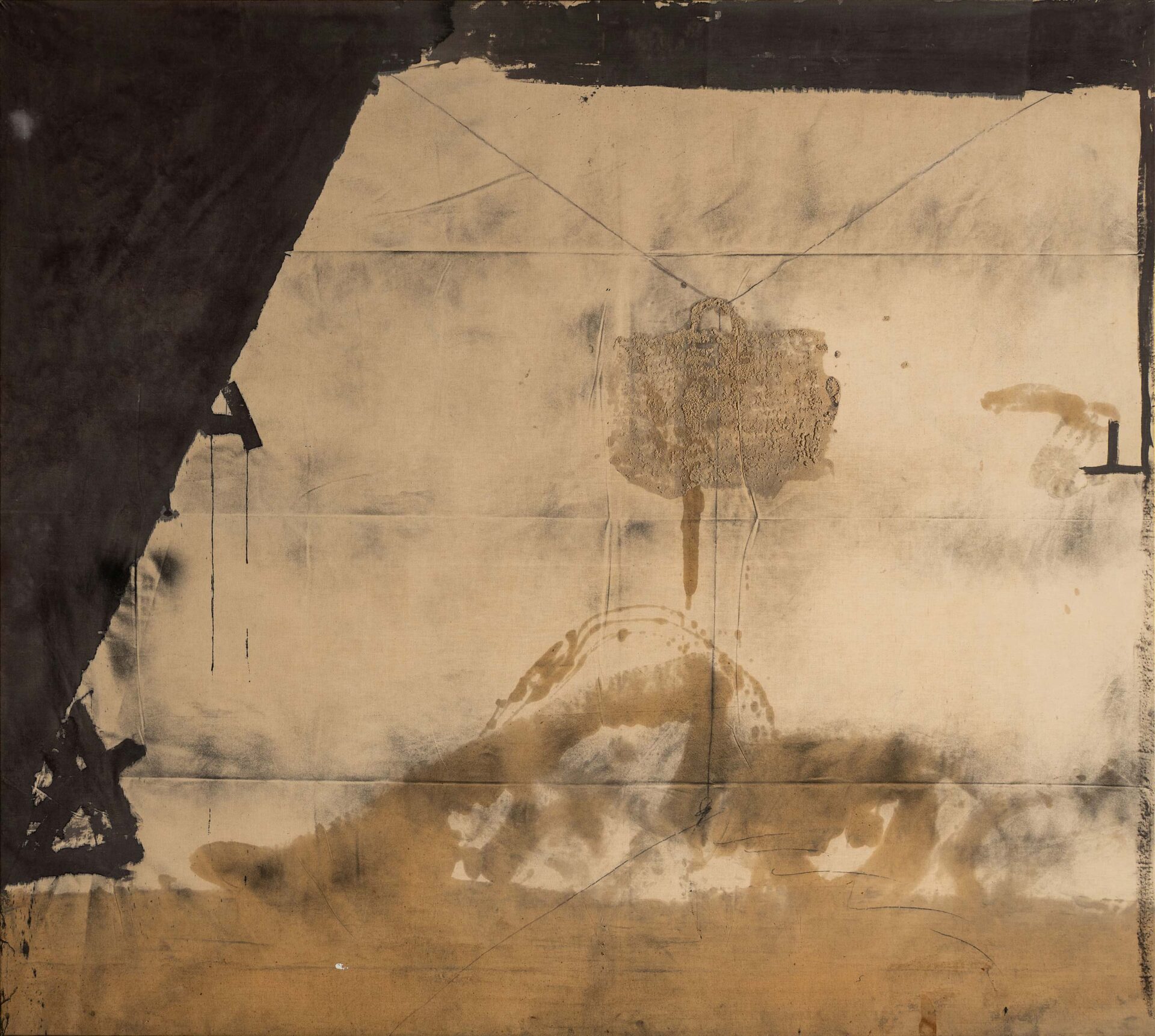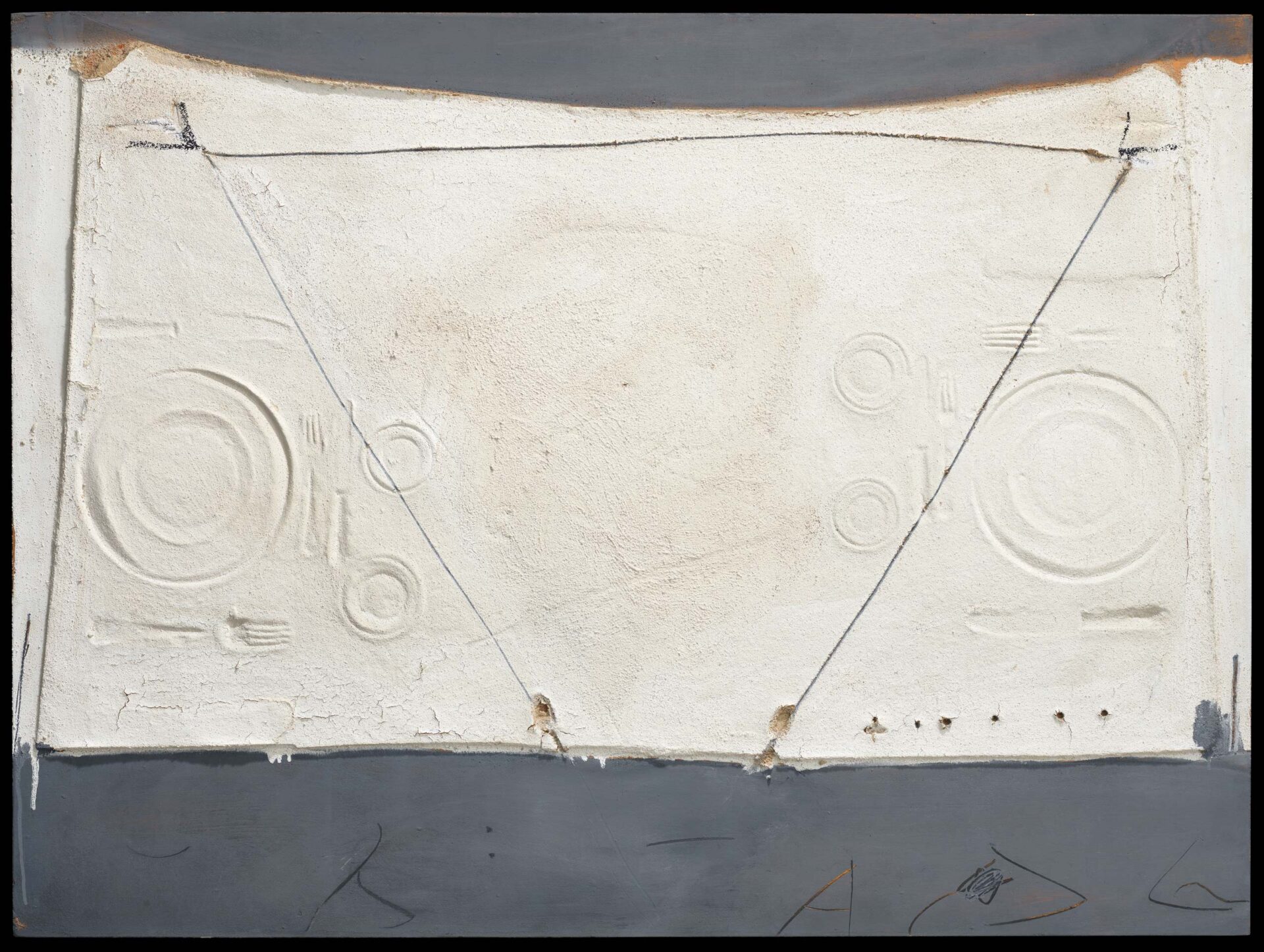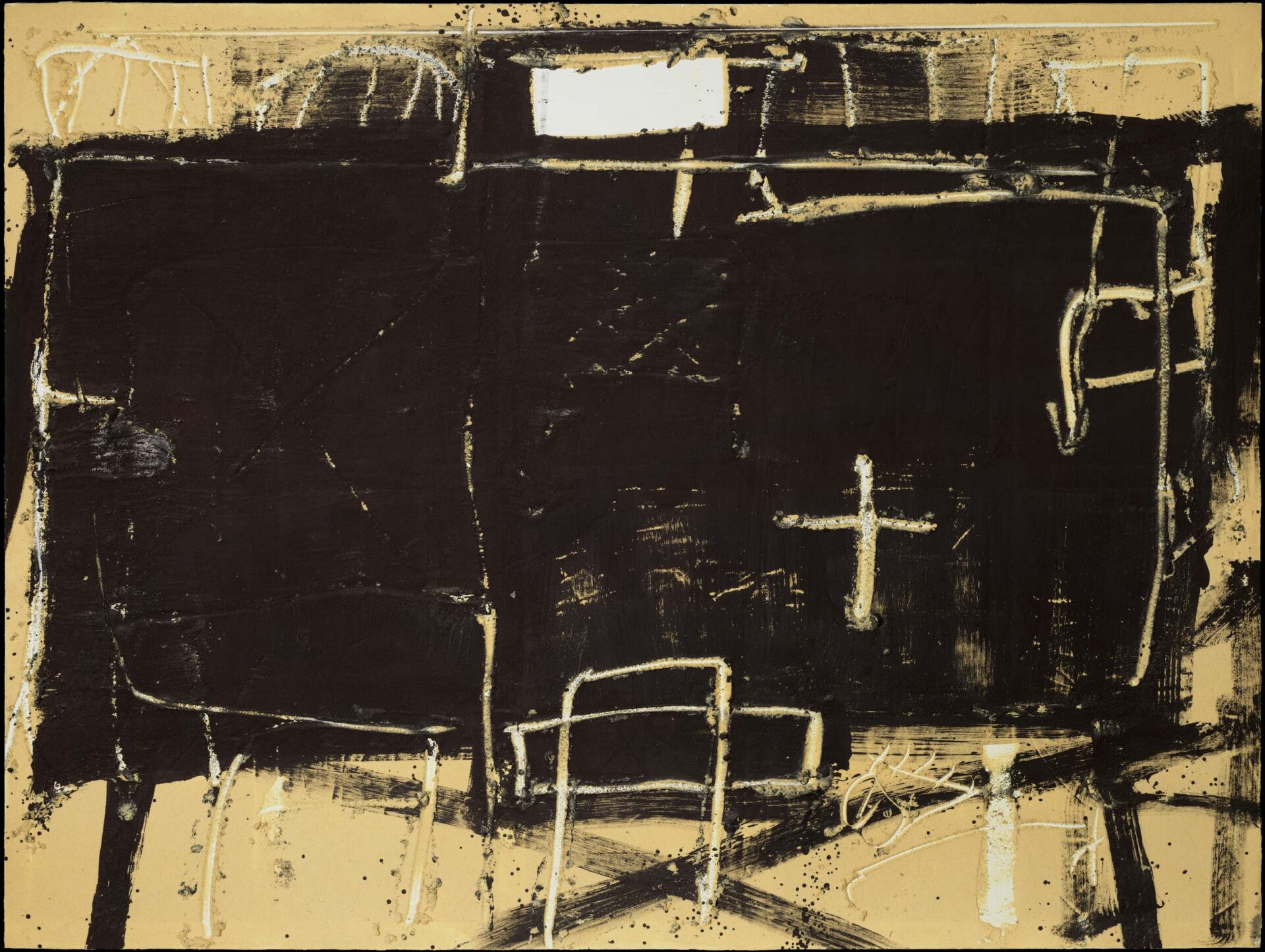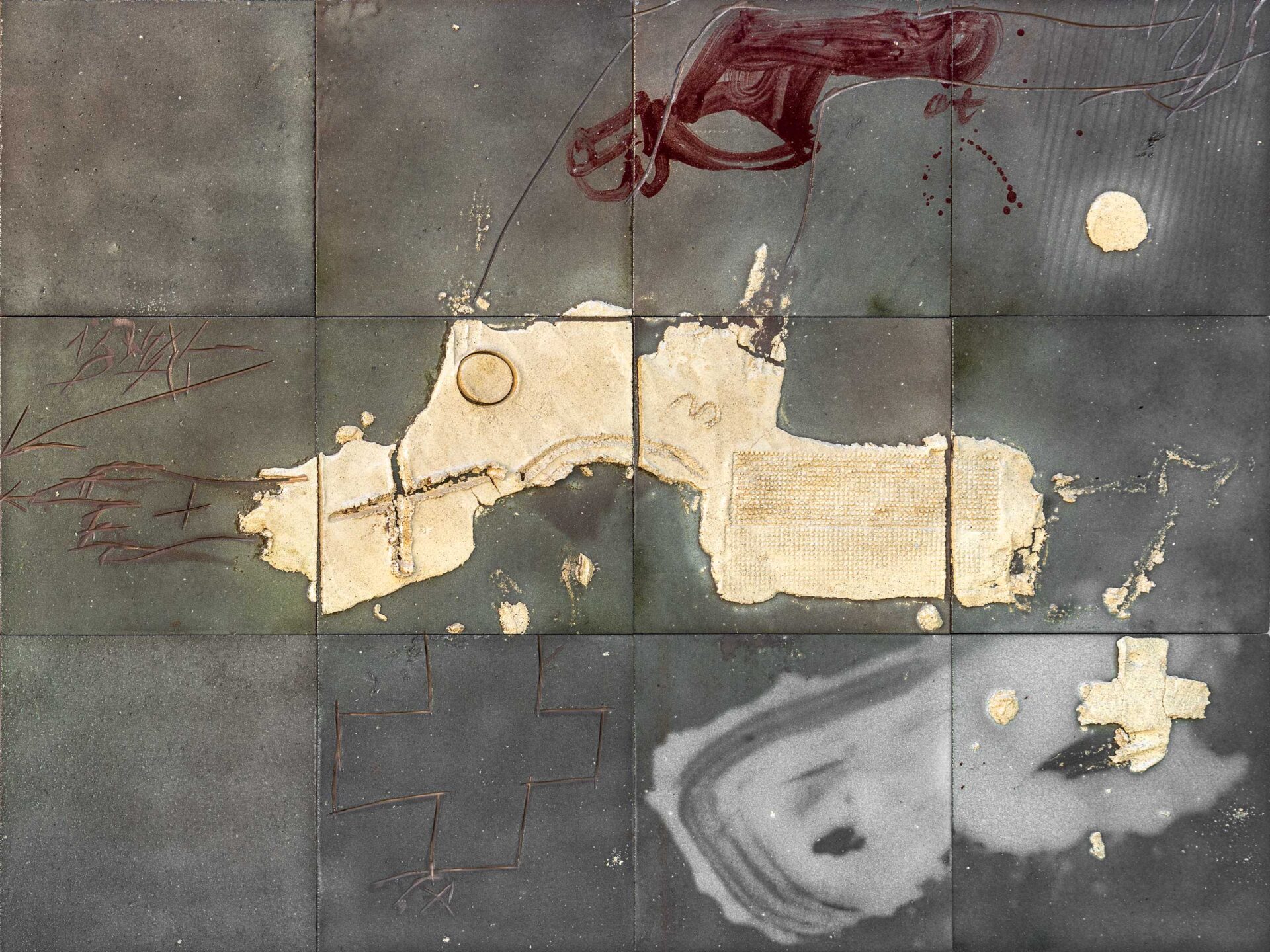Tàpies, considered one of the most outstanding Spanish artists of the second half of the twentieth century, was born in Barcelona into a middle-class Catalan family who passed on to him their love of books and culture in general. After the Spanish Civil War, he was laid up for a long period due to a lung disease, and used the time to read and do his first drawings. Once he had recovered, he began law studies, which he abandoned in the final year to devote himself fully to art.
His first works fall within the ambit of Surrealism, but he subsequently developed a style of his own in which texture plays a very prominent part. So it was that he created a series of works with relief into which he incorporated objects from everyday life such as doors, windows and chairs. It was a series of works that brought him great international recognition. The point is that Tàpies magnifies small objects in his works and makes them as transcendental as a divine image.
Tàpies took part in three exhibitions at the Venice Biennale (1952, 1954 and 1958) before being selected to represent Spain at the 45th in 1993, during which he received the Golden Lion for Painting. In 1984, he established the Fundació Antoni Tàpies in Barcelona to promote the study and exhibition of modern and contemporary art.
Tàpies’s work is included in numerous public and private collections, such as Tate in the United Kingdom, MoMA in New York, the Galleria Nazionale d’Arte Moderna in Rome, the Centre Georges Pompidou in Paris, the Stedelijk Museum in Amsterdam and the Museum of Contemporary Art in Los Angeles, among others.
He received many honours and awards over the course of his life, including the Premium Imperiale granted by the Emperor of Japan in 1990. In 1992 he was elected an Honorary Member of the Royal Academy of Arts in London and of the American Academy of Art and Sciences in Cambridge, Massachusetts, and in 2003 the President of France appointed him Commander of the National Order of the Legion of Honour.
The Hortensia Herrero collection has several works by Tàpies, outstanding among which is Impresión de cesta sobre ropa, which belonged to the artist Eduardo Chillida and was shown in the exhibition that Chillida Leku devoted to him in 2021 and that addressed the relationship between the two artists.



